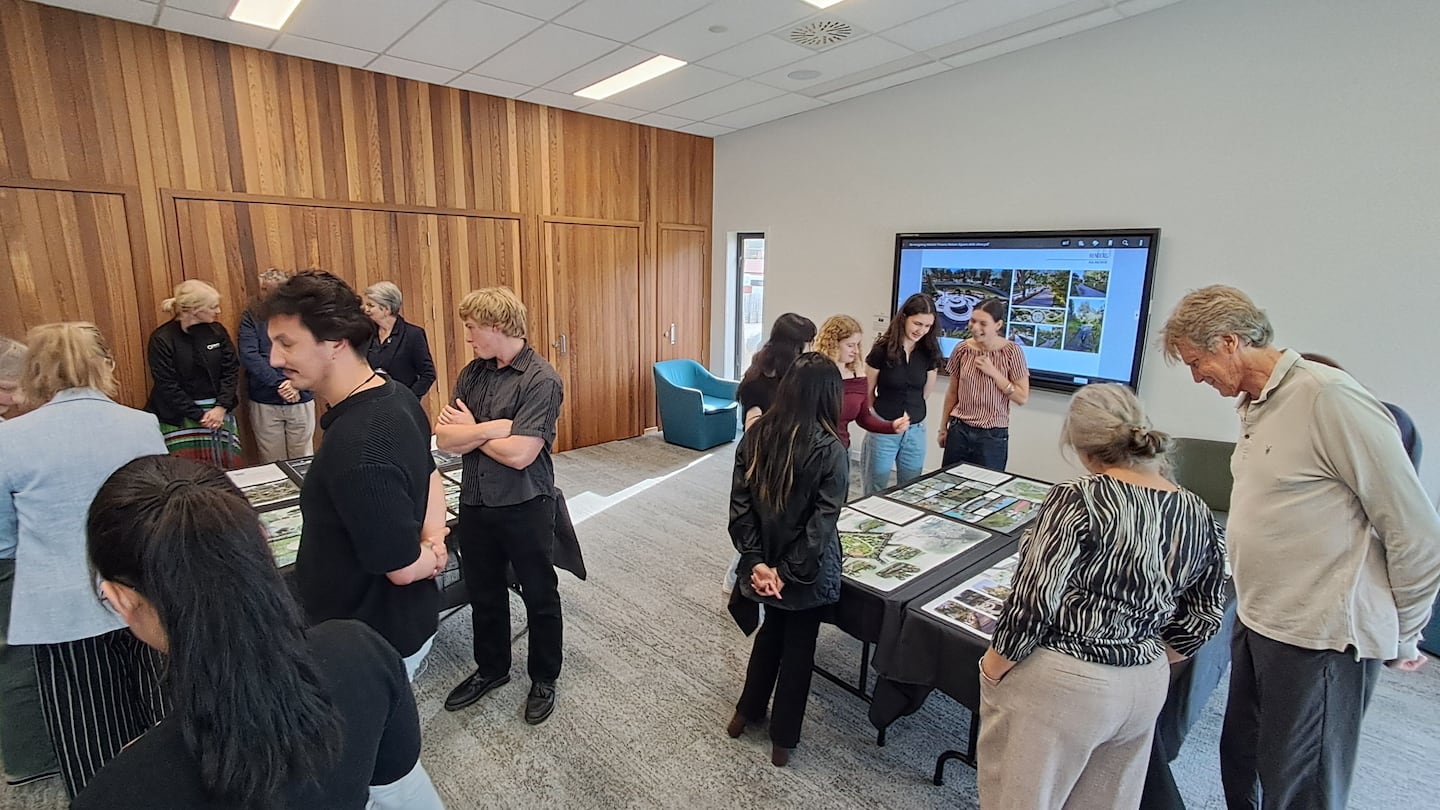Landscape architecture students have placed Māori history and values at the heart of their reimagining of Waitohi Picton’s Nelson Square.
The group of 14 second-year students from Victoria University of Wellington has opened an exhibition of their work at the Picton Library and Service Centre - Waitohi Whare Mātauranga.
The exhibition, which runs until November 19, features 10 concept designs for a revamped Nelson Square, and residents are invited to provide feedback on the designs via a QR code.
Students also presented their designs to Marlborough District Council, which would consider them as part of a deliberative process on the future of the square.
The exhibition was the culmination of a months-long project, which included a research trip in July to scope the site, and speak to residents and mana whenua about what they wanted from the space.
Many of the students, who worked in pairs, took inspiration from local Māori history, legends, and the environment in their designs.
The Tohorā Thread, by Charlotte London and Isla Hawkins, took its main inspiration from the Tohorā, or Southern Right Whale.

“To Māori, the Tohorā represented navigation, exploration and guidance across the ocean, much like the ferries that arrive in Waitohi today,” London and Hawkins wrote in their explainer.
Their design featured a Corten steel wall shaped like a whale that told the story of Te Atiawa’s voyage to Waitohi and water-activated concrete paint that revealed other parts of Te Atiawa’s story when it rained.
Two groups where inspired by Te Ihu Moe One, the snout of the taniwha Tui Ngarara, whose journey toward the ocean after getting stuck in mud created the Tuamarina River Valley, otherwise known as Waitohi Valley.
Samuel Fauth and Billy Lamont said the main path of their design, Te Haerenga o te Taniwha, would symbolise the taniwha’s journey to the ocean, the path would be surrounded by mounds, showing how the taniwha moved the earth around it.

Their communal area would represent the carving out of Koromiko, where the taniwha was said to have thrashed around and created a bowl shape, Fauth and Lamont said.
Ruby Gregson and Georgia Van den Broke wrote that their design Te Ara Whetu was inspired by Matariki.
Navigation was a big part of their design, by using directional markers designed with mana whenua to orient visitors and introduce the stories of the stars, Gregon and Van den Broke said.

“Pathways branch like constellations, linking the central campus, Auckland reserve, and the waterfront into a sequence of spaces in their own celestial network.”
An amphitheatre would mark the centre of the constellation, as a place for people to gather under the stars.
Other projects featured an octopus playground inspired by the legend of Kupe and Te Wheke-o-Muturangi, as well as a fragrance garden, a tea house for Rongoā tea, and seats made of recycled railway sleepers.
Victoria University teaching fellow Maria Rodgers said it was exciting for the students to be able to work on a “real world project”.
“The students have worked very hard on this because they care,” Rodgers said.
“Some of the designs are ambitious but hopefully there will be elements in them that the public will feel a connection to which could in turn lead to a redesign of Nelson Square.
“We would like to thank all those people whose passion for Waitohi Picton has supported this project.”
Vice-chairperson of Te Ātiawa Trust and chairperson of Waikawa Marae Rita Powick said design and development was an importance medium for understanding local history.
“Sharing knowledge and pūrākau (stories) that acknowledge our special landmarks and people, help bring depth and purpose into a space as it’s reimagined,” Powick said.
The project came from work between the council, Victoria University, Te Ātiawa and Kūmānu’s landscape architecture team, who co-ordinated the project with Better Off Funding provided by central government.
Visitors could provide feedback on the designs on the Reimagining Nelson Square website.
LDR is local body journalism co-funded by RNZ and NZ On Air.




